Your Minimalist Baby Gear Essentials Checklist for a Sustainable Start
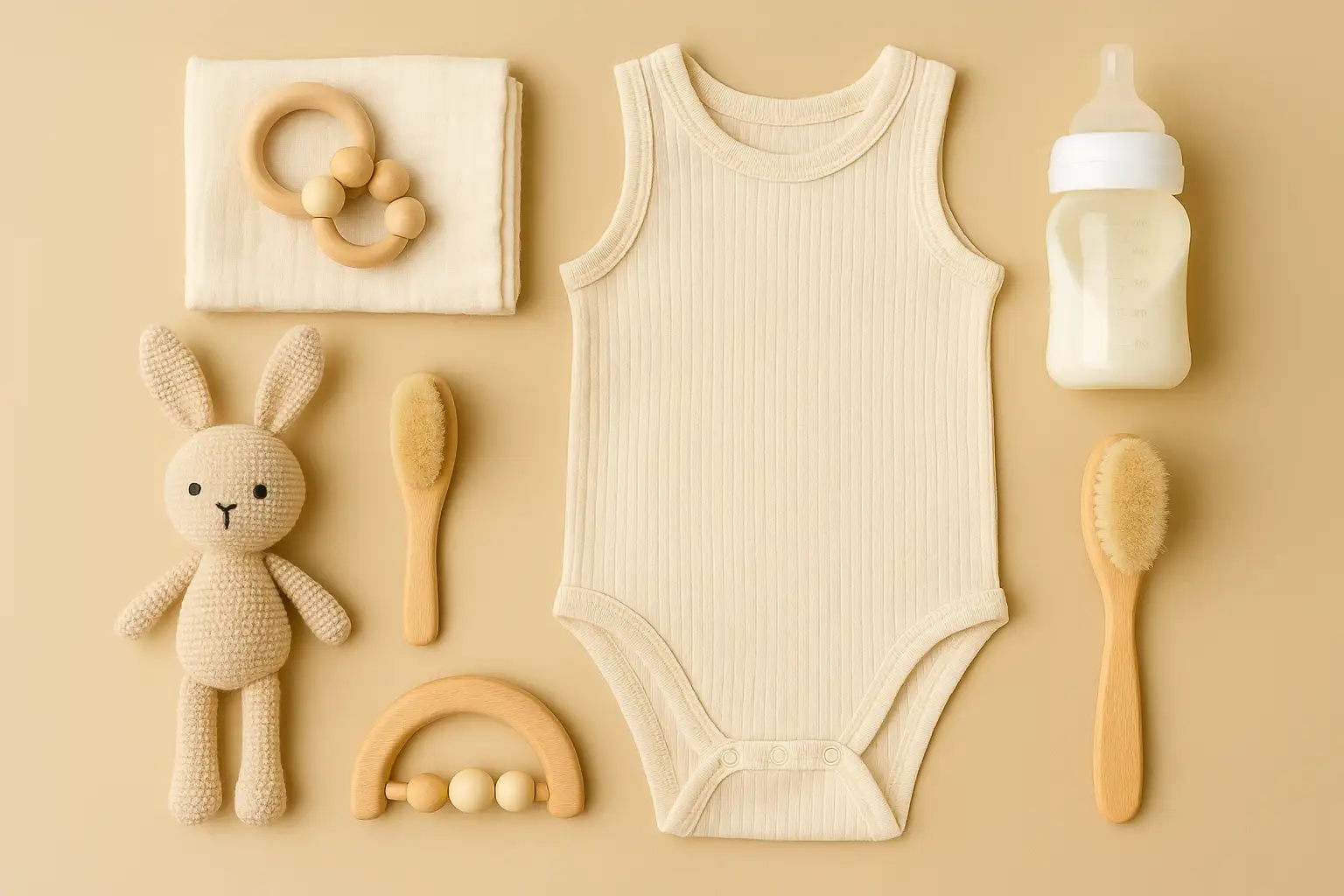
The impending arrival of a baby often triggers a flurry of nesting and preparation, which can quickly lead to an overwhelming accumulation of baby gear. Marketing campaigns and well-meaning advice can leave expectant parents feeling that a mountain of specialized equipment is essential for their little one's well-being. However, a growing movement embraces a more minimalist approach to baby gear, focusing on quality over quantity, multi-functional items, and sustainable choices that benefit both your family and the planet.
Adopting a minimalist mindset when preparing for your baby isn't about deprivation; it's about intentionality. It's about thoughtfully selecting only what you truly need, prioritizing items that serve multiple purposes and are built to last, and consciously opting for eco-friendly alternatives that minimize waste and environmental impact. This comprehensive guide provides an in-depth minimalist baby gear essentials checklist, offering valuable insights and actionable tips to encourage, guide, and inspire you to create a nurturing and sustainable environment for your newborn without unnecessary clutter.
The Philosophy of Less for Little Ones: Embracing Minimalism in the Nursery
Before diving into the checklist, it's important to understand the benefits of a minimalist approach to baby gear:
- Reduced Clutter: A minimalist nursery promotes a calmer and more organized environment, which can be beneficial for both parents and baby. Less stuff means less to clean, organize, and worry about.
- Cost Savings: Buying fewer, higher-quality, and multi-functional items can significantly reduce the overall cost of baby gear.
- Sustainability: A minimalist approach inherently aligns with sustainability by reducing consumption, minimizing waste, and encouraging the selection of durable and eco-friendly products.
- Focus on Essentials: By consciously choosing only what is truly needed, you can focus on the most important aspects of early parenthood: bonding with your baby and meeting their fundamental needs.
- Adaptability: Minimalist setups are often more adaptable as your baby grows and their needs evolve, reducing the likelihood of purchasing items with a very short lifespan.
Your Minimalist Baby Gear Essentials Checklist: Quality, Functionality, and Sustainability
This checklist focuses on the core necessities for the first few months, emphasizing multi-functional items and sustainable choices. Remember that every baby and family is unique, so adjust this list to your specific circumstances and preferences.
1. Sleeping: Creating a Safe and Simple Sleep Space
- Crib or Bassinet (1): Choose a JPMA-certified crib or bassinet made from solid wood (ideally FSC-certified) with non-toxic finishes. Consider a convertible crib that transitions into a toddler bed and beyond for extended use. A bassinet is useful for the first few months and takes up less space. Explore pre-loved options in good condition.
- Firm Mattress (1): Select a firm, flat mattress that fits snugly in the crib or bassinet. Look for mattresses made with organic cotton or natural latex and without harmful chemicals.
- Fitted Sheets (2-3): Opt for fitted sheets made from organic cotton or other natural fibers. Having a few allows for changes during washes.
- Sleep Sacks or Swaddles (2-3): Choose wearable blankets or swaddles made from breathable natural materials like organic cotton or muslin. These are safer than loose blankets in the crib.
What to Consider Skipping (Initially): Crib bumpers (pose a suffocation risk), excessive decorative bedding sets, rocking bassinets with automatic features (often used for a short period).
2. Feeding: Nourishing Your Baby Simply and Sustainably
- If Breastfeeding:
- Nursing Bras (2-3): Choose comfortable and supportive nursing bras made from organic cotton.
- Reusable Nursing Pads (6-10 pairs): Opt for washable and reusable nursing pads made from cotton or bamboo instead of disposable ones.
- Nursing Pillow (1): A supportive nursing pillow can aid in comfortable positioning. Consider a versatile one that can also be used for tummy time and propping.
- Breast Pump (if needed): If you plan to pump, consider a manual or electric pump based on your needs. Explore renting options or purchasing a pre-loved, hospital-grade pump.
- Reusable Milk Storage Containers (6-8): Choose glass or BPA-free reusable containers for storing breast milk instead of disposable bags.
- If Formula Feeding:
- Bottles (4-6): Opt for glass or BPA-free plastic bottles. Start with a smaller quantity and size as your baby grows.
- Nipple Brush (1): Choose one with a natural or durable, easy-to-clean material.
- Formula Dispenser (1): A reusable formula dispenser can simplify on-the-go feeding.
- For Solids (Later):
- High Chair (1): Choose a simple, easy-to-clean high chair made from sustainable wood or recycled materials. Consider one that can be used for an extended period.
- Reusable Bibs (3-5): Opt for washable bibs made from fabric or silicone instead of disposable ones.
- Small Bowls and Spoons (2-3 sets): Choose bamboo, silicone, or stainless steel options.
What to Consider Skipping (Initially): Bottle warmers (can warm bottles in a bowl of hot water), sterilizers (can sterilize in boiling water), excessive amounts of bottles of different sizes (start small), single-use formula packets (less eco-friendly than larger containers).
3. Diapering: Minimizing Waste from Day One
- Cloth Diapers (15-24): If opting for cloth, choose a system that suits your lifestyle (e.g., all-in-ones, prefolds with covers). Include reusable wipes and a wet bag for soiled diapers. (See dedicated blog post for more details).
- Eco-Friendly Disposable Diapers (Small Pack): If choosing disposables, opt for brands that use more sustainable materials and less harsh chemicals. Buy smaller packs initially to determine the best fit and brand for your baby.
- Changing Mat (1): Choose a wipeable changing mat made from non-toxic materials. Consider one that can be easily folded for portability.
- Reusable Wipe Solution Bottles (2): If using cloth wipes, have a couple of bottles for storing your wipe solution.
- Diaper Rash Cream (1): Opt for natural and organic options in minimal packaging.
What to Consider Skipping (Initially): Wipe warmers (unnecessary), diaper pails with special liners (a regular trash can with a lid works for disposables; wet bags for cloth).
4. Clothing: Comfort and Sustainability for Tiny Bodies
- Bodysuits (5-7): Choose organic cotton or other natural fiber bodysuits in a few basic colors.
- Sleepers (4-6): Opt for comfortable and breathable sleepers made from natural materials. Look for those with convertible hand and foot covers.
- Leggings or Pants (3-5): Choose versatile bottoms made from organic cotton or other sustainable fabrics.
- Socks or Booties (3-5 pairs): Opt for natural fiber options.
- Hats (1-2): A soft hat for warmth, especially in the early days.
- Outerwear (as needed): Depending on your climate, a jacket or snowsuit made from recycled materials.
What to Consider Skipping (Initially): Excessive amounts of clothing in every size (babies grow quickly), specialized outfits for every occasion.
5. Bathing: Keeping Clean with Minimal Impact
- Baby Bathtub (1): Choose a simple, space-saving bathtub made from durable, non-toxic plastic or silicone. Consider one that can be used in the sink or shower.
- Washcloths (3-5): Opt for soft, reusable washcloths made from organic cotton or bamboo.
- Baby Shampoo and Wash (1): Choose a natural, fragrance-free option in minimal packaging or a solid bar.
- Soft Towels (2-3): Opt for organic cotton or bamboo baby towels.
What to Consider Skipping (Initially): Bath toys (can be introduced later), elaborate bath sets with unnecessary lotions and powders.
6. On the Go: Simple Solutions for Outings
- Baby Carrier (1): Choose a comfortable and ergonomic carrier that suits your body type. Explore different styles (wraps, slings, structured carriers) and consider borrowing before buying.
- Stroller (1): Opt for a lightweight and maneuverable stroller that meets your basic needs. Consider a used option or one with a modular design that can adapt as your child grows.
- Reusable Wet Bags (2-3): Essential for storing soiled diapers, wipes, and clothing on the go.
- Small Changing Mat (1): A portable, wipeable changing mat for diaper changes outside the home.
What to Consider Skipping (Initially): Car seat adapters for the stroller (assess if truly needed), multiple strollers for different terrains (start with one versatile option).
The Enduring Value of Less:
Setting up a low-waste nursery is an exercise in mindful preparation, prioritizing the essential needs of your baby while consciously minimizing your environmental footprint. By focusing on quality, durability, multi-functionality, and natural materials, you can create a
Related Blogs

Unplug and Imagine: Choosing Battery-Free Toys for Engaging and Sustainable Playtime
Foster imagination and save energy with manual musical toys, story books, and nature play.
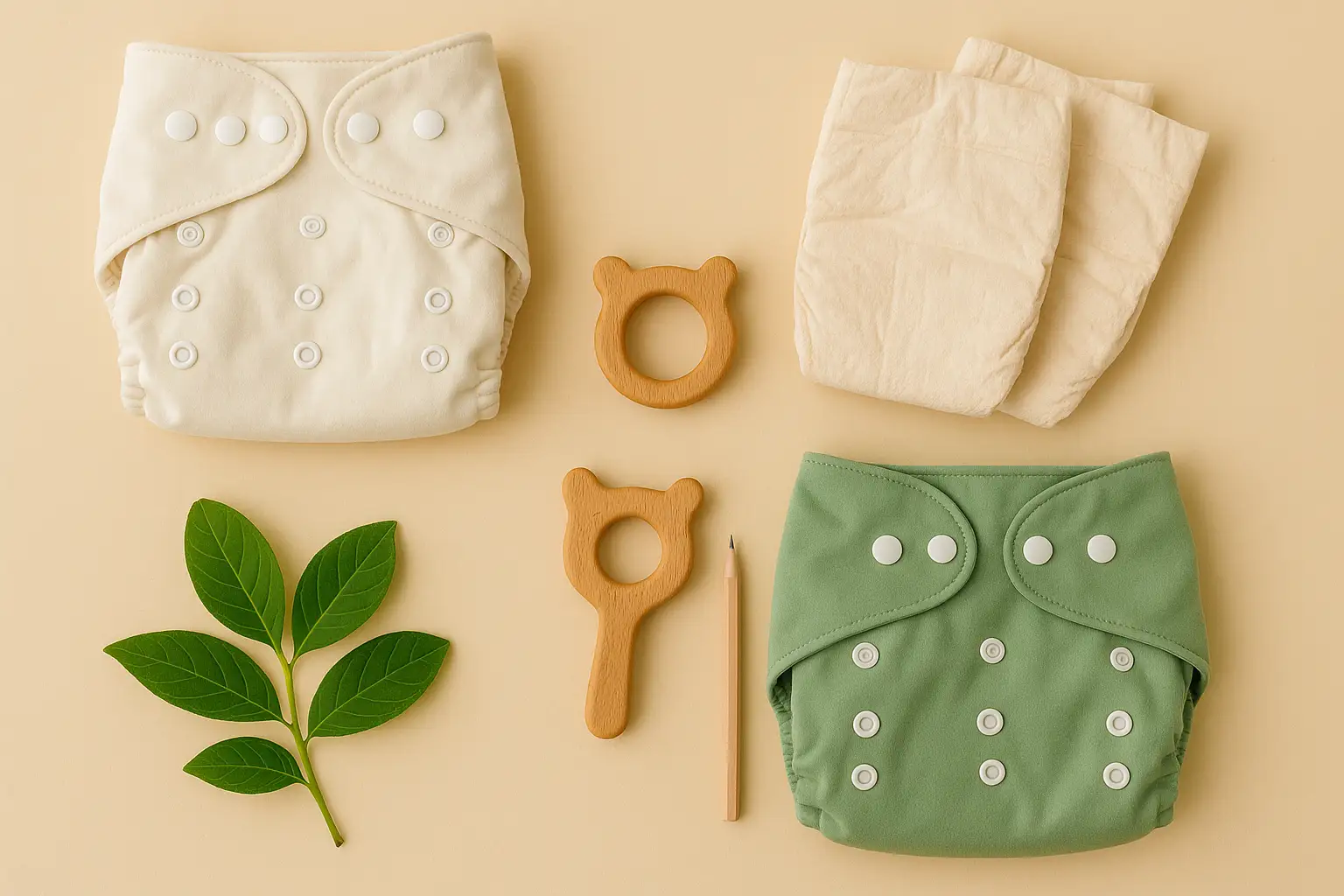
The Great Diaper Debate: Navigating Cloth vs. Eco-Disposables for a Sustainable Start
Comparison of sustainable alternatives to help you make informed decisions.
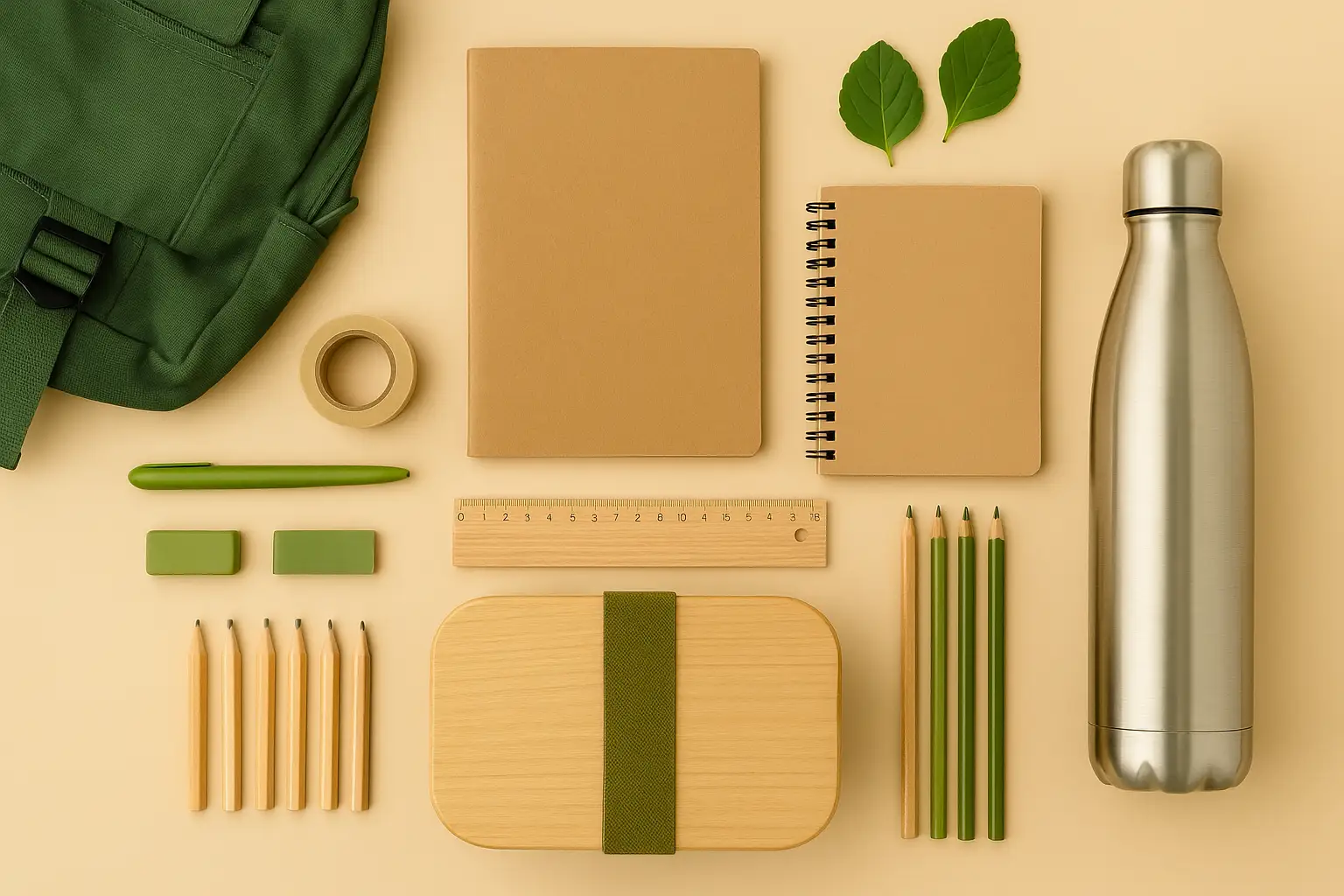
Equipping Young Minds, Protecting Our Planet: Sustainable School Supplies Kit
Insights on creating a sustainable school supplies kit in a sustainable way.
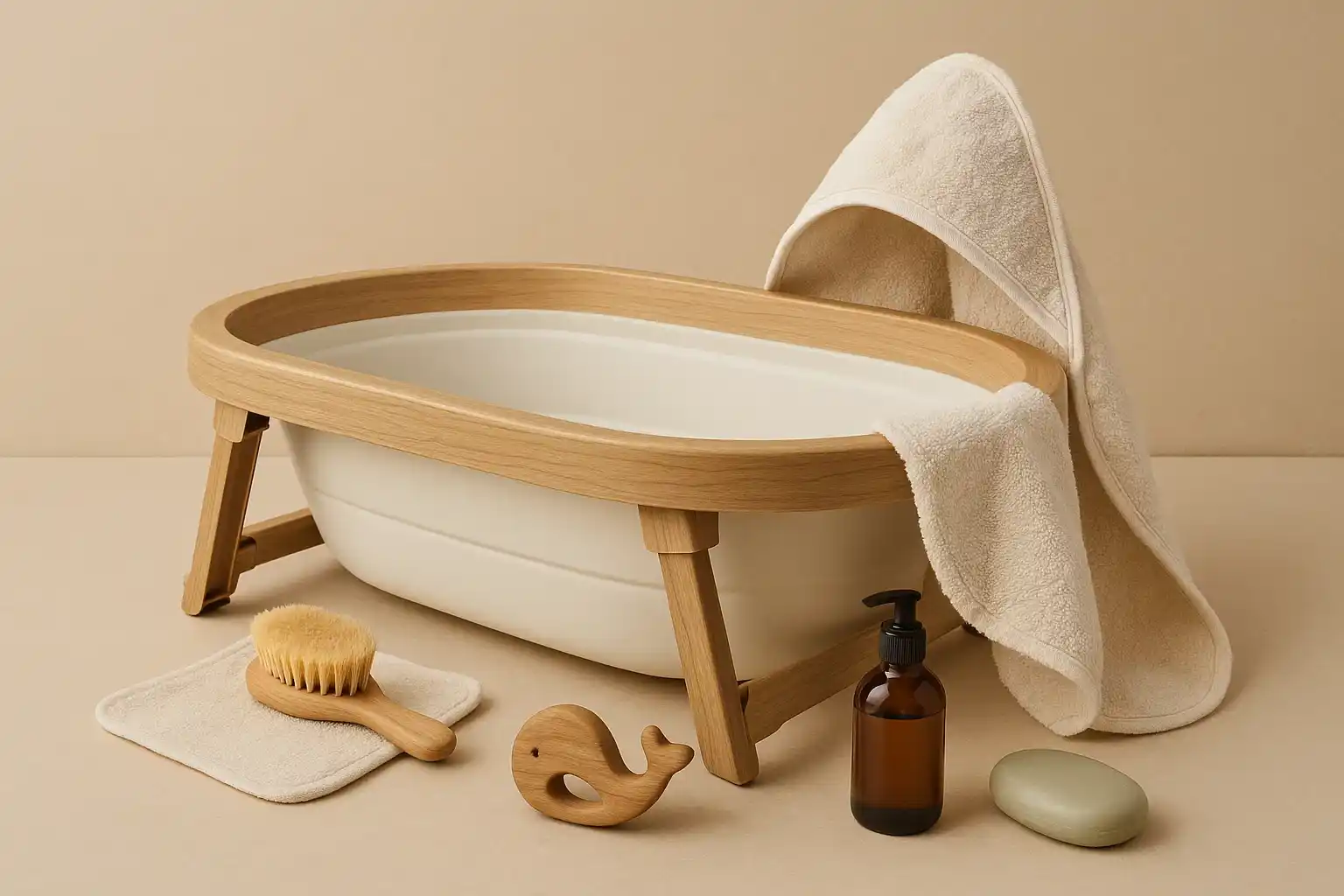
Bathtime, Simplified: Eco-Friendly Alternatives to Bulky Plastic Baby Baths
Reduce manufacturing impact and clutter with sink bath seats, inflatable tubs, or repurposed containers.

A Gentle Foundation: Choosing Eco-Friendly and Non-Toxic Changing Mats for Your Baby
Opt for organic cotton, cork-based, or recycled textile changing mats free from PVC and phthalates.
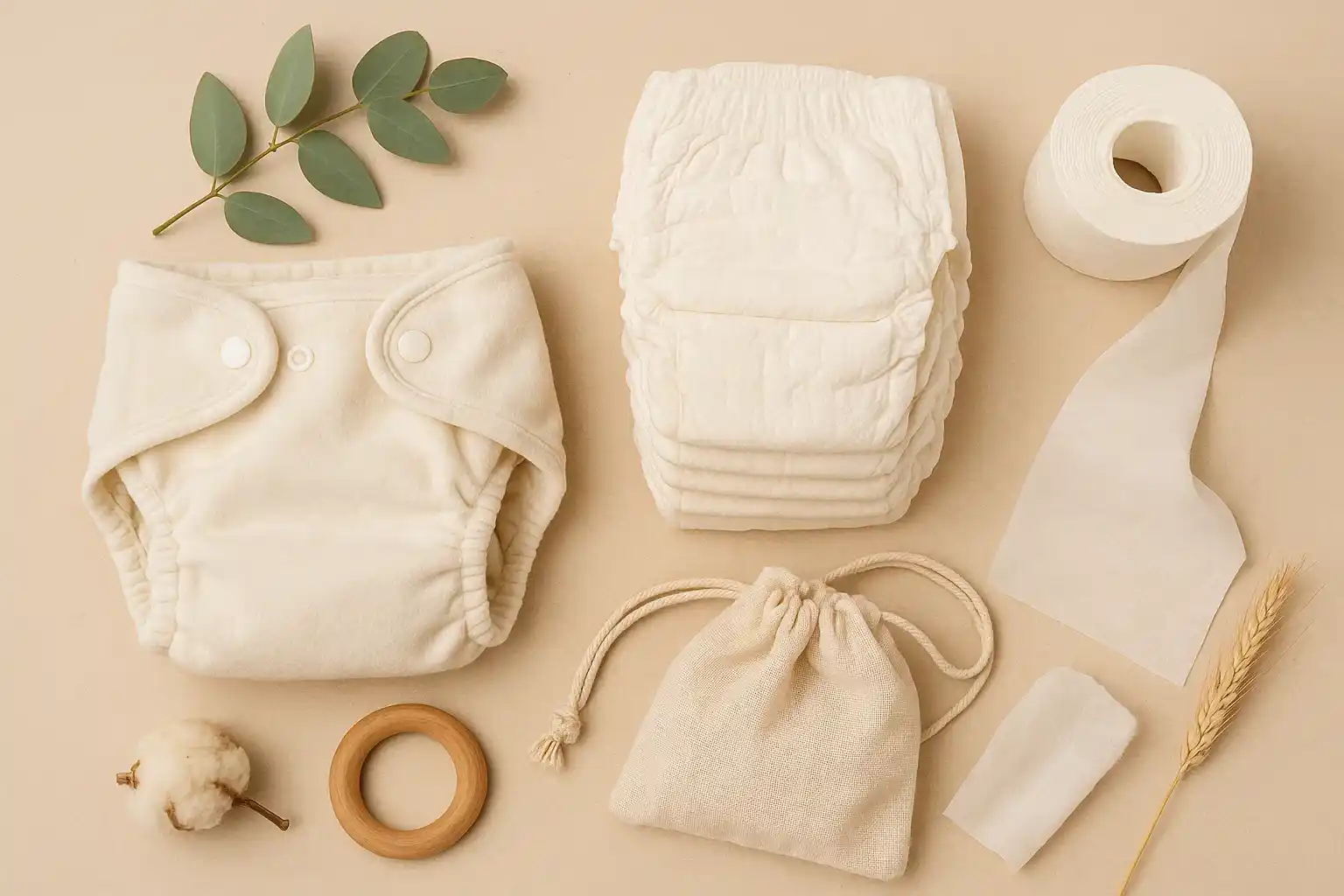
Diapering with Intention: Exploring Eco-Friendly Alternatives to Disposable Diapers
Cut down drastically on landfill waste with cloth, compostable, or hybrid diaper systems.
Stay in the Loop
Get tips and insights tailored to your interests — no spam, just sustainability.